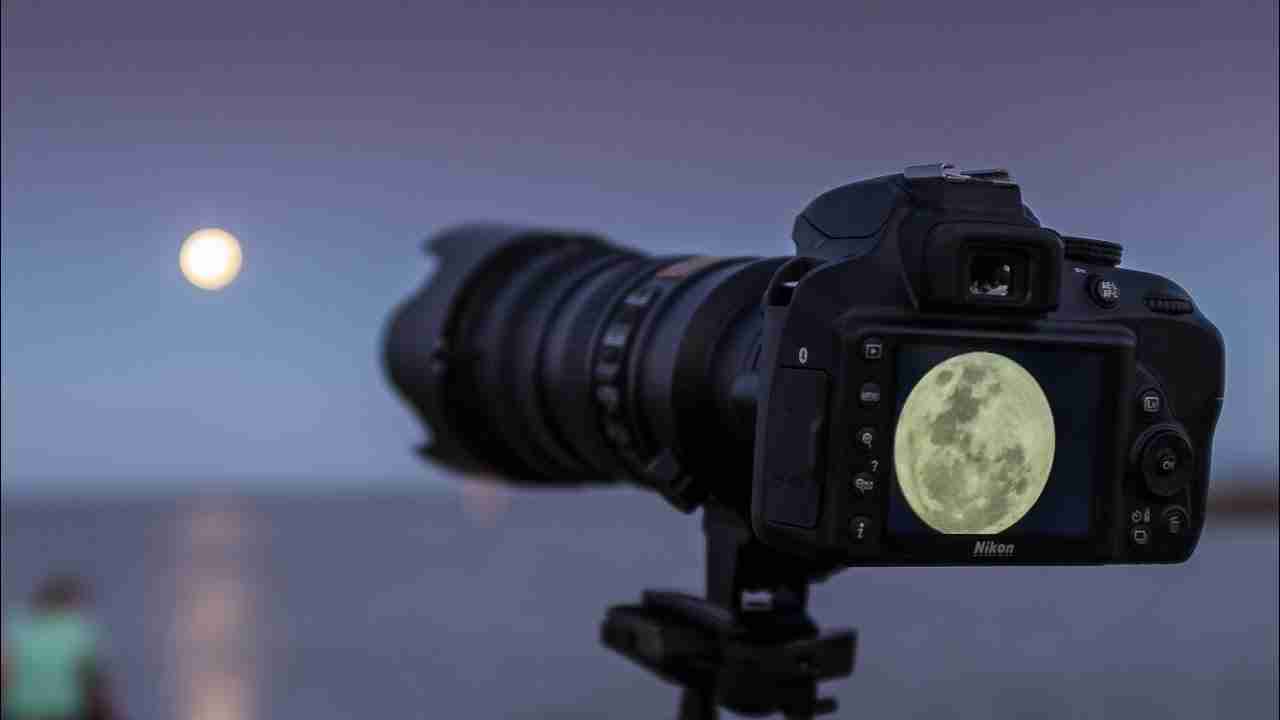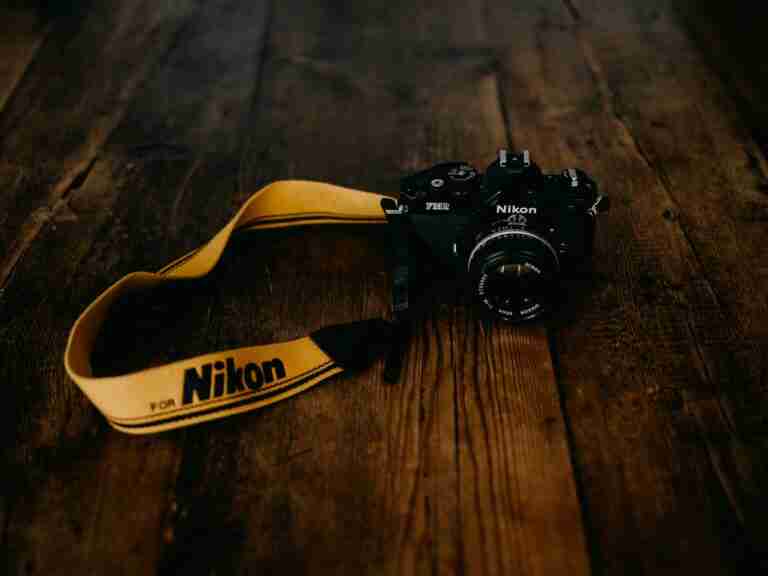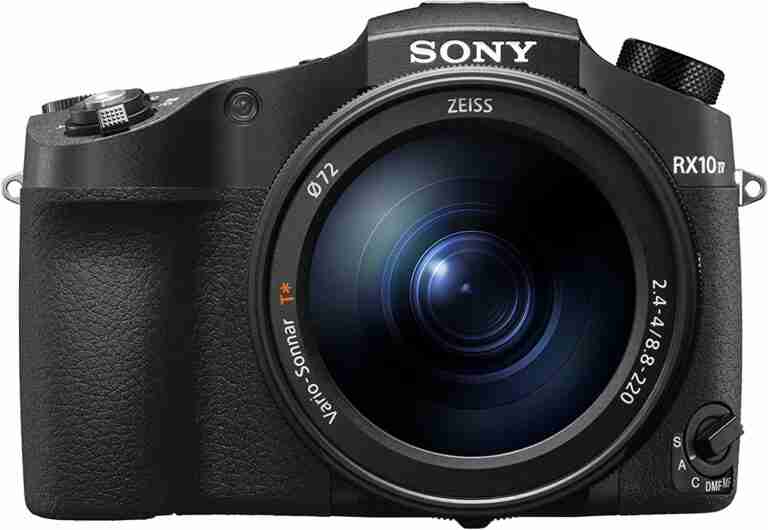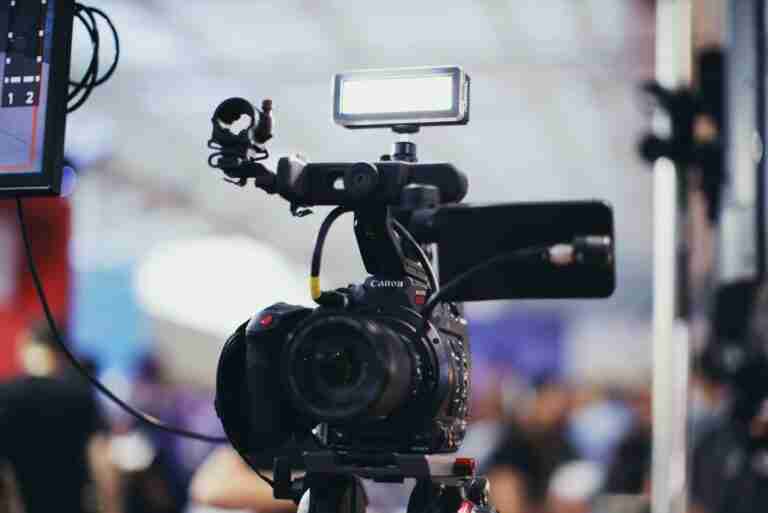10 Best Cameras For Moon Photography in 2024
Are you mesmerized by the moon’s enigmatic beauty and eager to capture its allure? You’re not alone!
Moon photography has captivated the hearts of many, from those just dabbling in the world of photography to seasoned pros. It’s an art that combines patience, skill, and, most importantly, the right camera.
Whether you’re planning to frame the moon amidst a stunning landscape or gearing up for an awe-inspiring lunar eclipse, the camera body in your hands is your most trusted companion on this celestial journey.
Delving into the 10 best cameras for moon photography in 2024, this guide covers it all. From the robust and feature-rich DSLRs that empower you with creative control to the advanced, yet compact, mirrorless cameras that promise both performance and portability, there’s a treasure trove of options.
And for those who prefer a straightforward, hassle-free approach, the latest point-and-shoot cameras are more than capable of capturing the moon’s beauty. Each camera choice is an opportunity to see the moon in a new light, whether you’re a beginner starting your journey or a seasoned photographer looking to add lunar shots to your portfolio.
So, grab your tripod, set your sights on the sky, and let’s embark on a journey to find the perfect camera to capture the moon’s mystique.
Whether your budget is as vast as the night sky or more down-to-earth, there’s a camera out there with your name on it. Let the lunar photography adventure begin!
Contents
- Why Moon Photography Is So Fun
- Common Challenges That New Photographers Face When Buying Their First Camera
- What To Consider When Buying Your First Moon (Lunar) Photography Camera
- Top 7 Moon Photography Cameras Overall
- 3 Best Cheap Cameras For Moon Photography
- My Final Thoughts On Best Cameras For Moon Photography
Why Moon Photography Is So Fun
Moon photography (also called lunar photography) offers an unmatched thrill of capturing the full moon in its many phases, from the subtle crescent to the fully illuminated spectacle.
The joy of taking moon pictures lies in the challenge of low light shooting and the reward of stunning images that detail the moon’s surface. With the right focal length and camera sensor, photographers can produce sharpest images that showcase all the details of the lunar surface, turning a simple moon shot into a great picture.
Whether it’s adjusting the fast shutter speed, mastering manual focus for precise focusing, or experimenting with different shooting techniques, moon photography pushes your creative boundaries.
Plus, the excitement of planning your shoot around the moon phase and achieving that perfect test shot adds to the fun. It’s not just about taking pictures; it’s about capturing a moment of celestial beauty that’s both fleeting and eternal.
Common Challenges That New Photographers Face When Buying Their First Camera
Venturing into the world of moon photography as a newcomer presents its unique set of challenges. From deciphering the jargon to making the first big camera purchase, the journey is both exciting and daunting.
Here are a few challenges that most folks face when starting out:
- Overwhelming Options: Choosing the best cheap camera for moon photography can be daunting for newcomers. The market is flooded with options, from DSLR cameras to mirrorless camera systems, each boasting features that might seem overwhelming at first.
- Technical Terms Confusion: New photographers often grapple with understanding technical terms like camera sensor size, ISO performance, crop sensor, and the importance of lens compatibility, especially when looking for telephoto lenses for close-up shots of the moon.
- Accessory Needs: The need for a few accessories like a sturdy tripod to reduce camera shake, high-quality lenses for low light shooting, and possibly even wide-angle lenses for more creative compositions, can add to the initial investment.
- Budget Constraints: Balancing budget constraints with the desire to purchase a camera that supports their passion for taking stunning pictures of the moon is a significant hurdle.
- Gradual Investment Strategy: However, understanding that starting with a cheap camera and gradually adding accessories like a kit lens, Canon EF lenses, or investing in longer focal lengths for sharper images, can significantly enhance their moon photography experience, is key to overcoming these challenges.
What To Consider When Buying Your First Moon (Lunar) Photography Camera
Embarking on your lunar photography journey can be as thrilling as witnessing a lunar eclipse. But before you aim your lens at the night sky, it’s crucial to choose the right camera that aligns with your aspirations and skills. If you’re gearing up to buy your first camera for moon photography, here are five key considerations to guide you through the starlit path of camera selection.
- Camera Type: Different cameras offer varying levels of control and flexibility. DSLRs are known for their manual settings and lens versatility, while mirrorless cameras provide a lighter, more compact alternative without sacrificing image quality. For beginners, ease of use is key, so consider a camera that balances functionality with user-friendliness.
- Sensor Size: The sensor size is pivotal in astrophotography. A larger sensor can capture more light, which is crucial for moon photography. Full-frame sensors are ideal, but they can be pricey. An APS-C or micro four-thirds sensor can also do a great job for beginners, offering a good balance between cost and performance.
- Lens Compatibility: The lens is as important as the camera itself, especially for capturing the moon’s details. Look for a camera that’s compatible with a range of telephoto lenses, which you’ll need to zoom in on the moon. A telephoto lens is your best friend. Ensure that there are quality lens options available within your budget.
- ISO Performance: Low-light performance is a must for capturing the moon. A dedicated astronomy camera with a good ISO range and minimal noise at higher ISO settings will be crucial for getting clear, detailed moon shots against the dark sky.
- Battery Life and Durability: Long exposure times and outdoor conditions demand a camera with good battery life and durability. Check the battery performance and build quality of the camera, ensuring it can withstand the rigors of night photography.
Selecting your first camera for lunar photography doesn’t have to be rocket science. You don’t need to know how to build a rocket ship to take you to the lunar surface, in order to take a picture of said surface.
By considering these key factors – camera type, sensor size, lens compatibility, ISO performance, and durability – you’ll be well-equipped to make an informed choice.
Remember, the best camera is the one that not only fits your current needs but also inspires you to explore the vast, beautiful realm of moon photography.
Top 7 Moon Photography Cameras Overall
Embarking on your moon photography adventure is like unlocking a new realm of creativity under the stars, and choosing the right camera is your first step into this mesmerizing world.
With the myriad of options available, my top 10 list is curated with the amateur photographer in mind, guiding you through the labyrinth of tech to find that perfect companion for your lunar quests.
Let’s dive in and discover the tools that will transform your fascination with the moon into stunning captures that tell your unique story.
1. Canon EOS R5

Canon EOS R5 has become one of the most popular cameras for moon photography due to its excellent image quality, fast autofocus, and impressive burst modes. With its 45MP full-frame sensor and 8K video recording capability, you can capture detailed images of the Moon even in low light settings. Thanks to Canon’s Dual Pixel CMOS AF System, you’ll be able to track the Moon’s motion in the sky quickly and accurately with fast autofocus. Furthermore, the R5 has an impressive electronic shutter speed of up to 1/8000 of a second, allowing you to capture the Moon as it zooms across the sky.
Pros:
- 45MP full-frame sensor
- 8K video recording
- Dual Pixel CMOS AF System
- High shutter speed
Cons:
- Expensive
- Heavy body
2. Sony A7S III

The Sony A7S III has become the go-to choice for many pro-moon photographers for its unrivalled low light performance. Incredibly sensitive to light, this full-frame camera can capture clear and sharp images of the night sky, even when the moon is hidden behind clouds. With a maximum ISO of 409,600, noise levels are barely visible, even in low light conditions. The A7S III also comes with an impressive 4K video recording capability, allowing you to capture time-lapses of the stars and the Moon with ease.
Pros:
- Outstanding low light performance
- High maximum ISO
- 4K video recording
Cons:
- Price
- Slow autofocus
3. Nikon D850

The Nikon D850 is a great choice for amateur moon photographers who are just getting into the craft. Featuring a 45.7MP full-frame sensor, the D850 boasts impressive image quality, fast autofocus, and exceptional dynamic range. It also comes with built-in WiFi and Bluetooth, allowing you to easily transfer images from the camera to your mobile device. Furthermore, the camera is compatible with a variety of NIKKOR camera lenses, giving you more flexibility when it comes to capturing the moon.
Pros:
- 45.7MP full-frame sensor
- Built-in WiFi and Bluetooth
- Compatible with NIKKOR lenses
Cons:
- Expensive
- Optical viewfinder
4. Canon EOS-1D X Mark III

Canon’s EOS-1D X Mark III is a great option for serious photographers who want to take their moon photography to the next level. With its 20.1MP full-frame sensor, fast autofocus and ISO range of up to 16,000, this camera will make capturing the moon easier than ever before. Additionally, the camera comes with Canon’s Dual Pixel AF system, allowing you to track the moon’s motion in the sky with razor-sharp accuracy. Finally, the EOS-1D X Mark III also boasts a 10 FPS burst mode, making it one of the fastest digital cameras on the market.
Pros:
- 20.1MP full-frame sensor
- Speed and accuracy
- ISO range
- 10 FPS burst mode
Cons:
- Expensive
- Heavy body
5. Nikon Z7

The Nikon Z7 is a great two-in-one option for amateur and pro photographers alike. This mirrorless camera offers resolution and performance fit for both stills and video shooting. On the video side, this camera can record in 4K UHD, which is perfect for capturing the moon in motion. For stills, the Z7 comes with a 45.7MP full-frame sensor and an impressive ISO range of 64-25,000. Furthermore, with its 493-point hybrid autofocus system, this camera will make sure you never miss a shot.
Pros:
- Great for both stills and video
- 4K UHD video
- 45.7MP full-frame sensor
- Wide ISO range
- Fast autofocus
Cons:
- Expensive
- Heavy body
6. Panasonic Lumix G9

The Panasonic Lumix G9 is an excellent choice for serious photographers who want something a bit more advanced for their moon photography. This mirrorless camera features an impressive 20.3MP sensor and 81 autofocus points for tracking the moon as it moves across the sky. Additionally, it features Panasonic’s 5-axis Dual Image Stabilization system, which helps to minimize image shake even in low light conditions. Furthermore, the Lumix G9 is capable of recording high-quality 4K video, making it great for time-lapses and video clips of the night sky.
Pros:
- 20.3MP sensor
- 81 autofocus points
- 5-axis Dual Image Stabilization
- 4K video
Cons:
- Expensive
- Heavy body
7. Sony RX100 VII

The Sony RX100 VII is an excellent option for those who want a pocket size camera with pro-level performance. This pocket-sized camera boasts a 20.2MP sensor and a wide ISO range of 80-51,200, allowing you to capture crystal-clear images of the night sky. Additionally, the RX100 VII features a 0.02 second autofocus along with 325 autofocus points, allowing you to track the Moon’s movement in the sky with ease. Furthermore, the camera offers up to 24fps burst mode, making sure you never miss a shot.
Pros:
- Compact and lightweight
- 20.2MP sensor
- Wide ISO range
- 0.02 second autofocus
- 24fps burst mode
Cons:
- Expensive
- No 4K video
3 Best Cheap Cameras For Moon Photography
Diving into moon photography doesn’t have to drain your wallet.
I’ve handpicked the top 3 affordable cameras that punch well above their weight, making it easier for you to embark on your lunar photography journey without compromise.
These picks ensure that your passion for capturing the moon’s mystique is not limited by budget, but empowered by quality and value.
1. Canon EOS M50

The Canon EOS M50 is a great choice for those who are just getting into moon photography. Featuring a 24.1MP APS-C sensor, the EOS M50 offers excellent image quality and fast autofocus for capturing sharp photos of the night sky. Additionally, with a maximum ISO of 25600 and 9 FPS burst mode, this camera is great for capturing time-lapses of the night sky. Furthermore, the EOS M50 comes with a Vari-angle LCD monitor, allowing you to preview your photos and adjust the camera settings in real time.
Pros:
- 24.1MP APS-C sensor
- Fast autofocus
- High maximum ISO
- 9 FPS burst mode
- Vari-angle LCD monitor
Cons:
- No 4K video recording
- Optical viewfinder
2. Sony A6000

The Sony A6000 is a great choice for those who are looking for an affordable camera for moon photography. This APS-C camera features a 24MP sensor and a wide ISO range of 100-25,600 to make capturing the night sky easier than ever. Additionally, it comes with Sony’s hybrid autofocus system with 179 points, allowing you to quickly and accurately track the moon as it moves in the sky. Furthermore, despite its small size and light weight, the A6000 boasts an impressive 11fps burst mode, making it easy to capture the moment of a lunar eclipse or other astronomical event.
Pros:
- Affordable
- 24MP APS-C sensor
- Wide ISO range
- Hybrid autofocus
- 11fps burst mode
Cons:
- Small LCD screen
- No 4K video recording
3. Canon PowerShot G7 X Mark III

The Canon PowerShot G7 X Mark III is another excellent pocket size camera for moon photography. This camera offers similar performance to that of the RX100 VII with a 20.1MP 1-inch sensor and a wide ISO range of 125-25,600. Additionally, it comes with Canon’s Dual Pixel CMOS AF System, allowing you to quickly and accurately track the moon as it moves across the sky. Furthermore, the G7 X Mark III offers 4K video recording, making it great for video clips of the night sky.
Pros:
- Compact and lightweight
- 20.1MP 1-inch sensor
- Wide ISO range
- Dual Pixel AF System
- 4K video recording
Cons:
- Expensive
- No viewfinder
My Final Thoughts On Best Cameras For Moon Photography
No matter what your budget or experience level, there’s something for everyone when it comes to moon photography.
Whether you’re a pro looking for the highest quality images or an amateur just getting into the craft, having the right camera can make all the difference.
Now that you’ve got your head wrapped around 10 of the best cameras for moon photography, should be a piece of cake (moonpie?) for you to find the right camera for your needs.
So, what are you waiting for? Get out there and start capturing the night sky!
- What Cameras Can You Use on PS5? A Compatibility Guide in 2024 - January 14, 2024
- What Cameras Support Windows Hello? A Guide to Compatible Devices - January 13, 2024
- 11 Best Cameras For Security With Night Vision In 2024 - August 9, 2023






